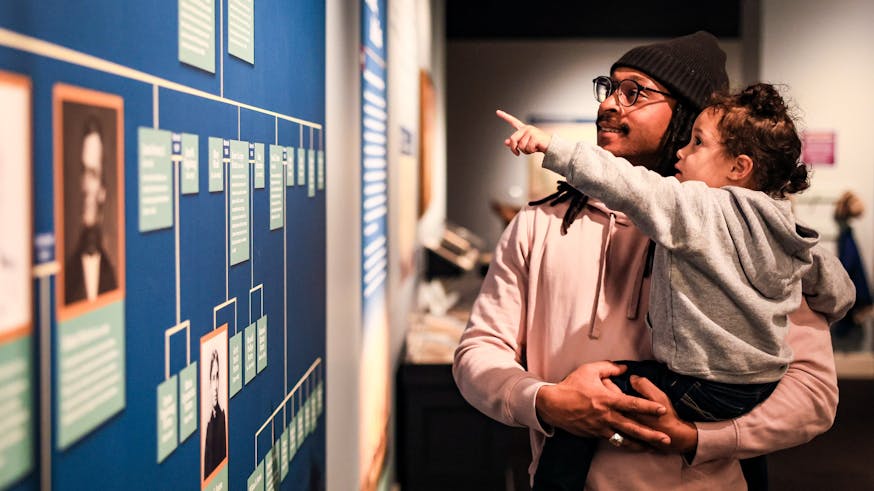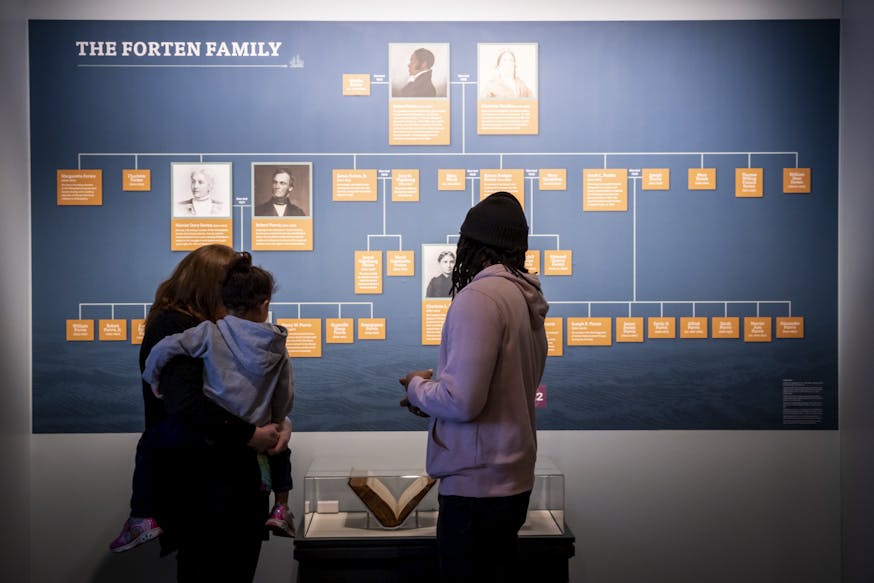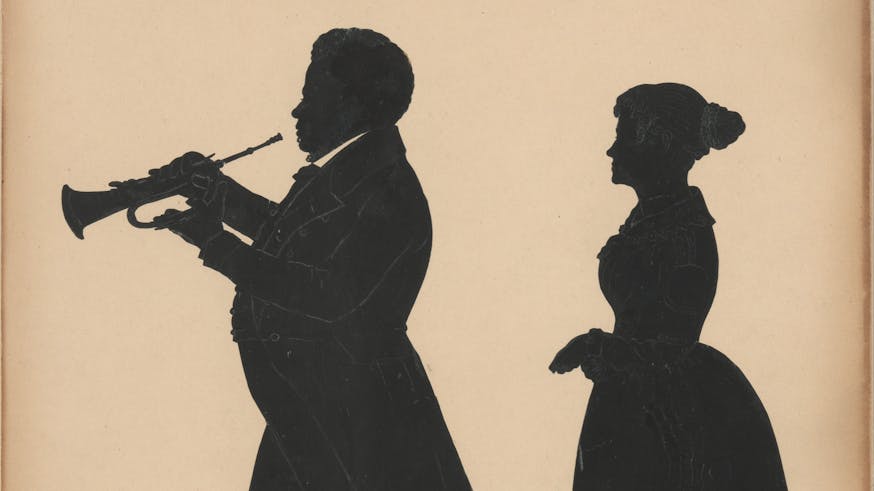Black Founders
Forten Family Artifacts on Loan from Howard University in Black Founders Exhibit

Born one month after his grandfather James Forten’s death in 1842, Charles Burleigh Purvis – son of Robert Purvis and Harriet Davy Forten Purvis – rose to become a prominent physician.
His medical skills were forged during the Civil War. Purvis started working as a nurse in the Union Army in 1864 and was stationed at Camp Barker in Washington, D.C. In 1865, Purvis was commissioned as an assistant surgeon in the Union Army and took care of recently freed people in the nation’s capital. Cramped conditions in the camps caused disease to spread rapidly, and Purvis himself survived a bout of typhoid. Taking care of the people there was a humanitarian effort with the goal of preparing them for life in freedom. After the war ended, Purvis was appointed to be the assistant surgeon of the Freedmen’s Hospital in Washington, the first hospital built to treat formerly enslaved people. Purvis also joined the medical faculty at the newly established Howard University and was a leader of its medical school until the early 1900s.
Today, Howard University’s Moorland-Spingarn Research Center is home to a number of artifacts related to the extended Forten family. The Moorland-Spingarn Research Center is the largest and most comprehensive repository of books, documents, and ephemera on the global Black experience, including the personal and official papers of Kwame Nkrumah, Paul Robeson, Alain Locke, Mary Frances Berry, Dr. Benjamin Mays, Vernon Jordon, and Amiri Baraka, to name a few from its more than 700 collections. It was founded in 1914 as the Moorland Library and became a research center within Howard University in 1973, consisting of the University Archives Division, the Manuscripts Division, Library, Museum, and the Black Press Archive.
Take a closer look below at the Forten family artifacts that the Howard University Moorland-Spingarn Research Center loaned to the Museum for our special exhibition, Black Founders: The Forten Family of Philadelphia.
Photograph of Charlotte Vandine Forten
on loan from the Howard University, Moorland-Spingarn Research Center, Manuscript Division, Francis J. Grimke Papers

This is the only known photograph of Charlotte Vandine Forten. Photographed by Isaac Rehn & Sons, it shows Forten as an elderly woman, likely in the late 1860s, prior to her death in 1884 at age 99. Forten outlived all but two of her nine children. This photograph belonged to her granddaughter Charlotte L. Forten who regretted how much “sorrow and fatigue” her grandmother had dealt with throughout her long life.
Mary Virginia Wood’s Friendship Album
on loan from the Howard University Moorland-Spingarn Research Center

This album belonged to Mary Virginia Wood, who married Robert Bridges Forten in 1836. The album is similar to a scrapbook that includes poetic and artistic contributions from her talented friends. Robert Bridges Forten, Mary Forten, and James Forten, Jr., all contributed poetry to the album. Mary Virginia Wood and her sister Annie moved to Philadelphia in the early 1830s from North Carolina. Little is known about their background, but they were likely the daughters of a wealthy white man and a woman of African descent. The Fortens welcomed Mary and Annie into their social circles.
Charlotte Forten Grimké Calling Card Plate
on loan from the Howard University Moorland-Spingarn Research Center

Following her marriage to Reverend Francis J. Grimké in 1878, Charlotte L. Forten used this engraved plate to print calling cards for herself that read “Mrs. Francis J. Grimké.” After their marriage, the Grimkés lived primarily in Washington, D.C, where they were prominent members of the capital city’s community of elite African Americans. As she made various social calls, Charlotte followed common practice at the time and left her calling card behind to remind hosts that she had visited.
Charlotte L. Forten's Journal
on loan from the Howard University Moorland-Spingarn Research Center

This is the fourth of five surviving journals written by Charlotte L. Forten. It covers her experiences from February through November of 1863 while Forten was stationed just south of Charleston, South Carolina, teaching formerly enslaved people during the Civil War. A few of Forten’s July 1863 journal entries describe meeting Colonel Robert Gould Shaw and members of the 54th Massachusetts Regiment, one of the first African American units in the Union Army. Forten admired Shaw and wrote about her deep sadness when she heard the news that Shaw and dozens of Black soldiers in the regiment were killed on July 18, 1863, while attacking Confederate-held Fort Wagner.
Bonus Item: Photograph of David Bustill Bowser
While this photograph is not physically on loan to the Museum for the exhibit, it has been reproduced on a reader rail courtesy of Moorland-Spingarn Research Center, Manuscript Division, Howard University, Washington, D.C.

David Bustill Bowser was the grandson of James Forten’s friend Cyrus Bustill. He trained as an artist under Robert Douglass, Jr., an African American student of painter Thomas Sully. While he struggled to be a financially successful artist, Bowser painted hats and signs for Philadelphia firefighters and portraits of people such as Abraham Lincoln and abolitionist John Brown. The Supervisory Committee for Recruiting Colored Regiments in Philadelphia selected Bowser to paint the flags for the USCT regiments. It was the largest commission of his career.
See the objects in our special exhibition, Black Founders: The Forten Family of Philadelphia, open through Nov. 26, 2023.
Learn More

Black Founders: The Forten Family of Philadelphia
February 11 - November 26, 2023
Forten Family Heirlooms on Loan from Descendants in Black Founders Exhibit
